2014 Husqvarna Fe 450 Review
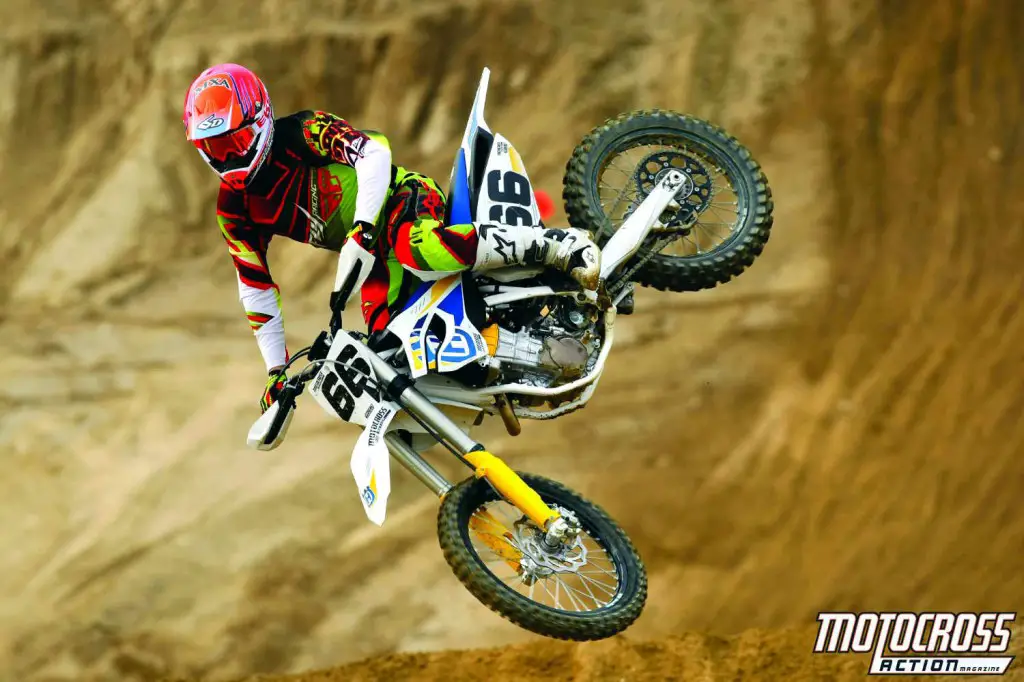
FIRST AND FOREMOST, IS THE 2014 HUSQVARNA FC450 BETTER THAN THE 2013 FC450?
A: Yes, but mainly because there was no FC450 in 2013. Since its glory days, Husqvarna has changed ownership several times. The Swedes sold it to Cagiva in 1987, then BMW took it over in 2007, and finally KTM bought it in 2013. Thus, the 2014 Husqvarna shares no genes with any previous Husky, which is a good thing given that the last Husqvarna 450cc motocross bike was a Rube Goldberg-device conceived by a group of BMW engineers who had obviously never ridden a dirt bike.
If you are asking if the 2014 Husqvarna FC450 is better than the BMW version, a kid's tricycle would be better than the 2011 TX449.
Q: IS THE HUSQVARNA FC450 A TOTALLY UNIQUE DESIGN?
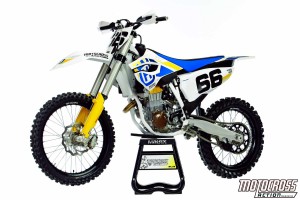
A: No. It is a KTM 450SXF clone.
Q: WHY DIDN'T KTM USE THE EXISTING HUSQVARNA FRAMES AND ENGINES?
A: The kindest way to say this is that KTM's engineering department was not enamored with the Italian designs. Plus, KTM's management didn't like the idea of dealing with Italian unions, nor did CEO Stefan Peirer buy Husqvarna in order to sell the same old thing.
So, to produce bikes in time for the 2014 selling season—although just barely—KTM elected to engage in the time-honored tradition of platform sharing.
Q: WHAT IS PLATFORM SHARING?
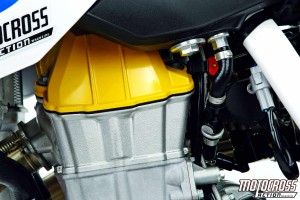
A: Platform sharing is when a manufacturer uses major components from one brand as the basis for another. This can include engines, frames, suspension components, wheels and brakes. Platform sharing saves money because the manufacturer gets the benefit of economy of scale. Instead of having to build new frames and engines for each of its vehicles, a company can make separate and inexpensive production runs of each. It can enjoy the benefits of sharing the same parts across several different models or brands.
The automotive industry is rife with platform sharing. The 2014 Cadillac XTS and the Chevrolet Impala are the same under the sheet metal. At Volkswagen, the Audi A4, Volkswagen Passat, Seat Exeo and Skoda Superb share the same underpinnings. Additionally, the Volkswagen Tiguan, Toureg, Scirocco, Jetta, Eos and Golf are all built on the same modular platform. And, you might be shocked to discover that Ford platforms have been used by Jaguar, Land Rover, Mazda, Lincoln, Volvo and Mercury at one time or another.
In Husqvarna's case, platform sharing allowed them to have products available in 2014 that consumers could buy, dealers could stock and KTM could support. Without platform sharing, there would probably not have been any new Husqvarnas until the 2016 model year—at the soonest.
Q: WHAT IS THE DIFFERENCE BETWEEN A HUSKY FC450 AND KTM 450SXF?
A: Although the Husky FC450 is built on the KTM 450SXF platform, there are 10 major differences.
(1) Plastic. The plastic parts are unique to the brand. The Austrians went with white plastic adorned with blue and yellow graphics (and yellow fork guards). Even the gas tank has a different shape.
(2) Subframe. Husqvarna's injection-molded polyamide composite subframe (it's okay to call it "plastic" or "nylon") is completely different from KTM's aluminum subframe or Husaberg's polyamide version.

(3) Side panels. Because of the plastic subframe, the airbox cover on the FC450 had to be reconfigured to fit. Instead of a separate airbox cover, the left-side panel incorporates both the airbox cover and number plate in one slab.

(4) Rims. The 2014 Husqvarna FC450 is equipped with black-anodized D.I.D. Dirt Star rims instead of the fake Excels that come on the KTM 450SXF. Additionally, the Husky uses silver spokes, whereas the KTM has black spokes.
(5) Rear axle. The 2014 Husqvarna FC450 has a 20mm axle; the KTM uses a 25mm axle. This means that the swingarm and axle blocks are also configured to accept the smaller rear axle.
(6) Hand guards. Every 2014 Husky comes with hand guards.
(7) Seat bolts. The 2014 Husky FC450 uses two seat bolts instead of the single bolt of the KTM. The two bolts are hidden away inside the hand holds where you have to fish them out when removing the seat.
(8) Color choices. The Husky comes with a black, 52-tooth rear sprocket instead of KTM's silver. To give its version of the KTM 450SXF engine more pizzazz, Husqvarna powder-coated the valve cover yellow. The grips have "Husqvarna" embedded in them instead of "KTM."
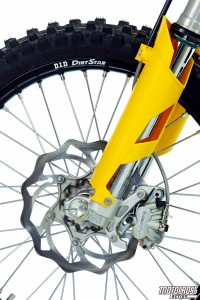
(9) Map switch. The Husqvarna has a switch on the handlebars that allows the rider to toggle between two different ignition maps.
(10) Muffler. The 2014 Husqvarna FC450 is outfitted with the Euro-spec muffler. It is slightly longer and has two perf-core baffles inside to keep the noise level down.
Q: WHAT CHANGES WOULD THE MXA WRECKING CREW LIKE HUSKY TO MAKE?
A: One of the inherent problems of believing in the "power of the press" is that if you flex it and nothing happens, you don't have any power. The MXA test crew has cajoled, harangued and harassed KTM to make specific changes. When we didn't get our way, we shifted our attention to annoying the factory engineers with our complaints. Here is a list of things we would like them to change in the future.
Preload ring. Who would make a shock preload ring that deforms when you use it, seizes when the nylon threads deform under pressure, and looks like hammered dog meat after a season of preload adjusting? The answer is KTM and Husqvarna. Metal rings work better.
Shift lever. In the stock position, the shift lever is too low. When you move it up one notch, it is too high. MXA places Husqvarna and KTM shift levers in a bench press and bows the middle of the shift lever to raise the tip.
Air filter. There has to be a better way to secure an air-filter cage inside an airbox. We would like a more distinctive shape to the air-filter cage so that it locks into the air boot more securely. Until then, we will keep double-checking to make sure that the filter's back edge is sealed against the intake tract.
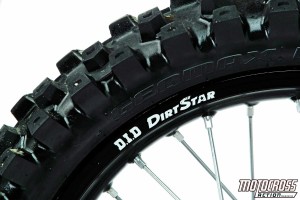
Shift shaft. Unlike the shift lever on a Japanese-built bike, an Austrian shift lever slips onto a tapered spline with a bolt holding it at the end of the shaft. Since the tapered shift shaft gets smaller as it moves outward, the shift lever can slide off if the bolt comes loose. Plus, the bolt that holds the shift lever to the tapered shaft doesn't insert into a notch to help keep the shift lever on like a Japanese-designed shift lever.
Rear sprocket bolts. They come loose with alarming regularity. It could be that the taper on the bolt head and the taper on the sprocket hole are mismatched or that the bolts are stretching, but never ride your Husqvarna or KTM without checking the rear sprocket bolts (and the spoke next to the rim lock).
Q: WHAT ARE THE MOST SIGNIFICANT FEATURES OF THE 2014 HUSQVARNA FC450?

A: Let's make a Hall of Fame list—electric starter, powerband, handling, brakes, hydraulic clutch, shifting, no-tools airbox, horsepower and levers.
Q: WHAT ARE THE LEAST SIGNIFICANT FEATURES OF THE 2014 HUSQVARNA FC450?
A: Let's make a Hall of Shame list—fork valving, shift-lever shape, 13mm bolts (this is a European thing), Torx bolts, air-filter cage shape, rear sprocket bolts and seat foam.
Q: HOW DOES THE 2014 FC450 RUN ON THE DYNO?
A: This bike makes 56.95 horsepower, but Husky spec'ed KTM's twin-baffle European muffler, which doesn't hurt the overall horsepower, but it mellows out the throttle response.
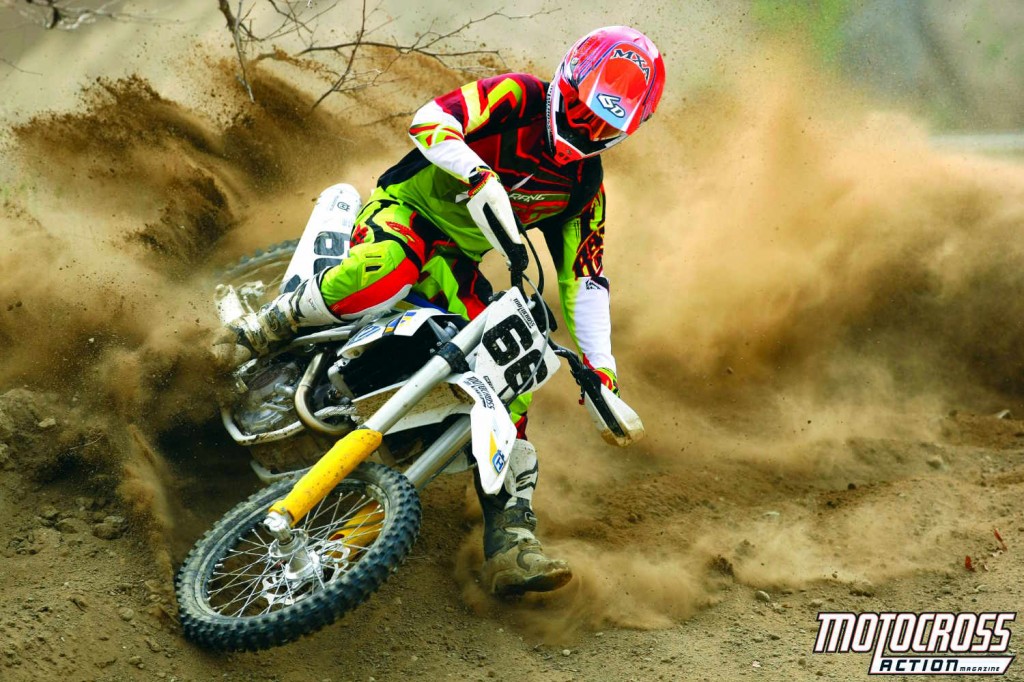
Q: WHAT WOULD WE CHANGE ON THE FC450 POWERBAND?
A: Although we often hear complaints about how brutal the power is off the bottom, it's not true. The Husqvarna FC450 starts out mellow as a flute and builds power like a kettledrum solo. By the time it reaches the midrange, the FC450 is romping. For the average rider, this is a great combination of sweet vibes and powerful percussion. And, you'd think that the MXA wrecking crew would be ha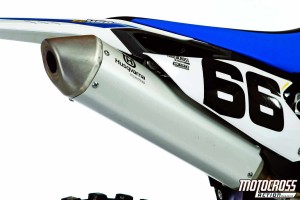 ppy with that—but we aren't.
ppy with that—but we aren't.
We want more power down low. We want the FC450 to hit harder sooner. We want more oomph at low rpm. We want the low-to-mid transition to feel more alive. We could get this with an aftermarekt pipe or slip-on.
Q: HOW DOES THE 2014 FC450 HANDLE?
A: This is one of the better-handling motocross bikes when set up right. It has an effortless flow that doesn't oversteer at tip-in, as the RM-Z and CRF sometimes do. It doesn't stand up in the center of the corner like a KX or push on the entrance like a YZ. Instead, it tracks the line the rider chooses and is very responsive to lean angles and weight shifts.
Yes, the Suzuki turns sharper, but it can't match the FC450's stability at speed. The key ingredient to taking advantage of this perfection is to play with the fork height and race sag to find the best head angle for the track conditions.
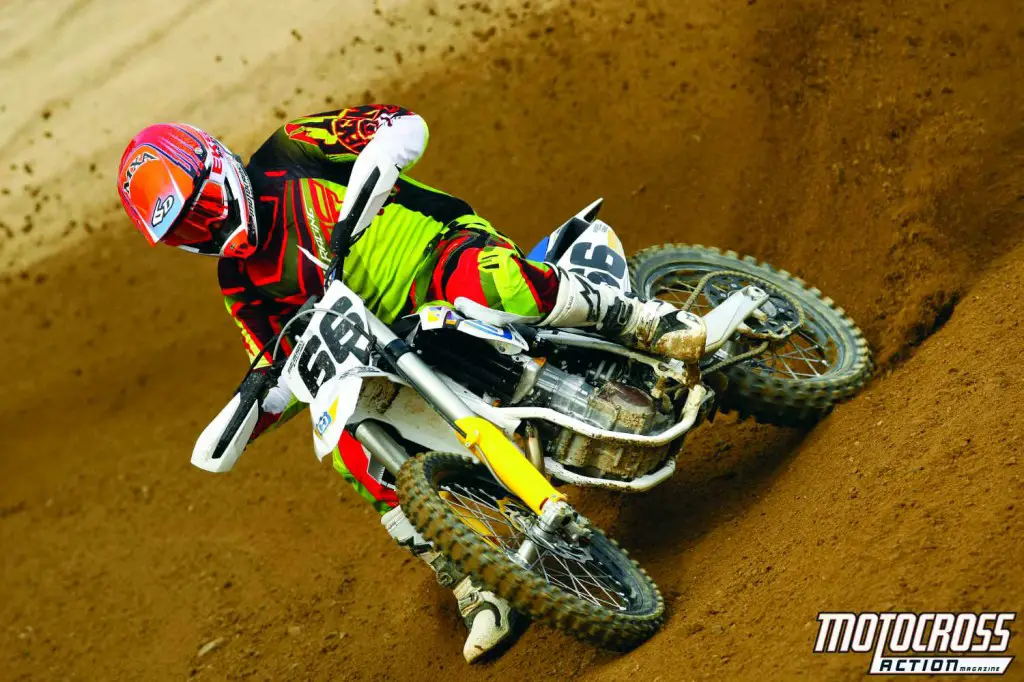
Q: WHAT IS THE TRUTH ABOUT THE WP SUSPENSION?
A: Platform sharing lowers manufacturing costs, reduces R&D time, and decreases the number of parts. All of this is well and good if you are sharing good parts, but what about the bad stuff?
Husqvarna is owned by KTM. WP is owned by KTM. The result is a shotgun wedding. The MXA prognosticators don't expect the current generation of WP forks to be spec'ed on the 2015 KTM 450SXF or Husqvarna FC450. That is the good news. The bad news is that they are on the 2014 Husqvarna FC450. So, we have to live with them.
The WP forks aren't the worst forks sold in 2014—that dubious honor goes to the Suzuki RM-Z450 SFF forks; however, if your greatest accolade is that you're not the worst, we don't see an effective company slogan coming from that factoid.
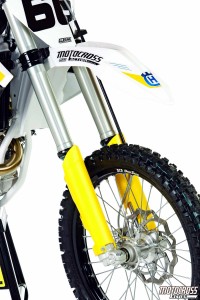
Q: WHAT DID WE HATE?
A: The hate list:
(1) Shock preload ring. We hate it, but for riders who never adjust their race sag, it's perfect.
(2) Weight. Although not the heaviest 450 on the showroom floor, it (and its green, red, yellow and blue compatriots) would be so much better if Jenny Craig knocked 10 pounds off.
(3) Shift lever. It's either too low or too high.
(4) Suspension. The WP forks are the biggest negative to the Husqvarna and KTM packages.
Q: WHAT DID WE LIKE?
A: The like list:
(1) Electric starting. Yes, we know that it adds 5 pounds to the overall weight of the bike, but never having to kick your bike again is worth 5 pounds.
(2) Plain bearings. Much like the old-school bronze bushings used on road racers, Husqvarna's plain bearings are good engineering.
(3) Hydraulic clutch. This is the longest-lasting clutch in motocross.
(4) Brakes. KTM and Husqvarna should be proud of their brakes. Kawasaki, Honda, Yamaha and Suzuki should be ashamed.
Q: WHAT DO WE REALLY THINK?
A: There are four types of buyers for the Husqvarna FC450:
(1) Loyal Husky customers. You may think that there aren't that many, but Husqvarna sold 6000 motorcycles last year.
(2) Rebels. As a rule, motocross racers are sheep. They buy what everyone else buys, which in 2014 means a KTM. But, there are rebels who want to be different. They are the black sheep of motocross, and a white Husqvarna suits their psyche perfectly.
(3) Orange-phobes. Over the decades, the fan boys have built up a lot of venom against KTM, thus they could never buy an orange motorcycle; however, a Husqvarna is a way for them to buy a KTM without having to eat their words.
(4) Motocross racers. Without the injection of KTM money, Husqvarna's 111-year history would have come to an end in 2014. So, thanks to KTM, motocross racers have another brand to put on their wish list. And it's a good bike.
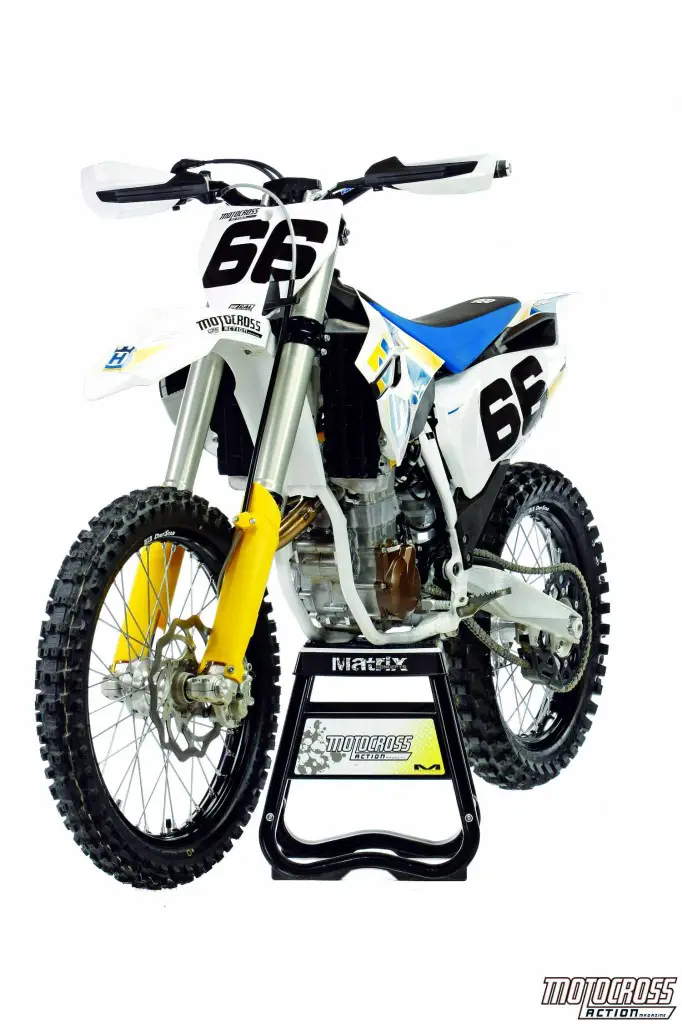
MXA HUSQVARNA FC450 SETUP SPECS
This is how we set up our Husqvarna FC450 for racing. We offer it as a guide to help you find your own sweet spot.
WP FORK SETTINGS
The 2014 Husqvarna FC450 suspension works best at Vet speed—any faster than that and it is quickly over-stressed. We have lived with these forks for many years without seeing any significant improvement in their damping. We originally blamed it on the Dutch, but a few years ago the WP facility moved to Austria (and got the Dutch off the hook). It is true that WP upped the compression damping for 2014, but that was just a baby step in the direction they need to go. If it were us, we would bite the bullet and send these forks to MX-Tech, MX1 or Pro Circuit.
For hardcore racing, we recommend this fork setup on the 2014 Husqvarna FC450 (stock specs are in parentheses):
Spring rate: 0.50 kg/mm
Oil height: 390cc
Compression: 9 clicks out (12 clicks out)
Rebound: 12 clicks out
Fork-leg height: 5mm up
Notes: If you are looking for plusher forks, lower the oil height by 10cc to 380cc. If you are faster and looking for firmer forks, raise the oil height by 10cc or 20cc (400cc or 410cc). The clickers cannot iron out the issues that Pro riders will have with these forks.
WP SHOCK SETTINGS
The WP shock is considerably better than the forks, but when one end of a bike doesn't work, it transfers the bulk of the load to the other end. Until you get the forks to absorb everything thrown at them, the shock will continue to suffer.
For hardcore racing, we recommend this shock setup for the 2014 Husqvarna FC450 (stock specs are in parentheses):
Spring rate: 5.7 kg/mm
Race sag: 100mm (105mm)
Hi-compression: 1-1/2 turns out
(2 turns out)
Lo-compression: 12 clicks out
Rebound: 15 clicks out
Notes: We don't think that the average FC450 rider will need a stiffer shock spring (unless he is over 200 pounds). Smaller riders can live with the stock spring by turning the compression clicker out.

Source: https://motocrossactionmag.com/2014-test-ride-husqvarna-fc450/







Tidak ada komentar:
Posting Komentar